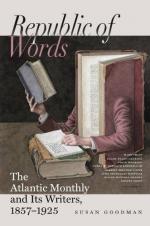His own pride and Russian interest demanded railways. He scanned the world with that keen eye of his,—saw that American energy was the best supplement to Russian capital; his will darted quickly, struck afar, and Americans came to build his road from St. Petersburg to Moscow.
Nothing can be more complete. It is an “air-line” road, and so perfect that the traveller finds few places where the rails do not meet on either side of him in the horizon. The track is double,—the rails very heavy and admirably ballasted,—station-houses and engine-houses are splendid in build, perfect in arrangement, and surrounded by neat gardens. The whole work is worthy of the Pyramid-builders. The traveller is whirled by culverts, abutments, and walls of dressed granite,—through cuttings where the earth on either side is carefully paved or turfed to the summit. Ranges of Greek columns are reared as crossings in the midst of broad marshes,—lions’ heads in bronzed iron stare out upon vast wastes where never rose even the smoke from a serf’s kennel.
All this seems good; and a ride of four hundred miles through such glories rarely fails to set the traveller at chanting the praises of the Emperor who conceived them. But when the traveller notes that complete isolation of the work from all conditions necessary to its success, his praises grow fainter. He sees that Nicholas held back from continuing the road to Odessa, though half the money spent in making the road an Imperial plaything would have built a good, solid extension to that most important seaport; he sees that Nicholas dared not untie police-regulations, and that commerce is wretchedly meagre. Contrary to what would obtain under a free system, this great public work found the country wretched and left it wretched. The traveller flies by no ranges of trim palings and tidy cottages; he sees the same dingy groups of huts here as elsewhere,—the same cultivation looking for no morrow,—the same tokens that the laborer is not thought worthy of his hire.
This same tendency to great single works, this same fear of great connected systems, this same timid isolation of great creations from principles essential to their growth is seen, too, in Nicholas’s church-building.
Foremost of all the edifices on which Nicholas lavished the wealth of the Empire stands the Isak Church in St. Petersburg. It is one of the largest, and certainly the richest, cathedral in Christendom. All is polished pink granite and marble and bronze. On all sides are double rows of Titanic columns,—each a single block of polished granite with bronze capital. Colossal masses of bronze statuary are grouped over each front; high above the roof and surrounding the great drums of the domes are lines of giant columns in granite bearing giant statues in bronze; and crowning all rises the vast central dome, flanked by its four smaller domes, all heavily plated with gold.




